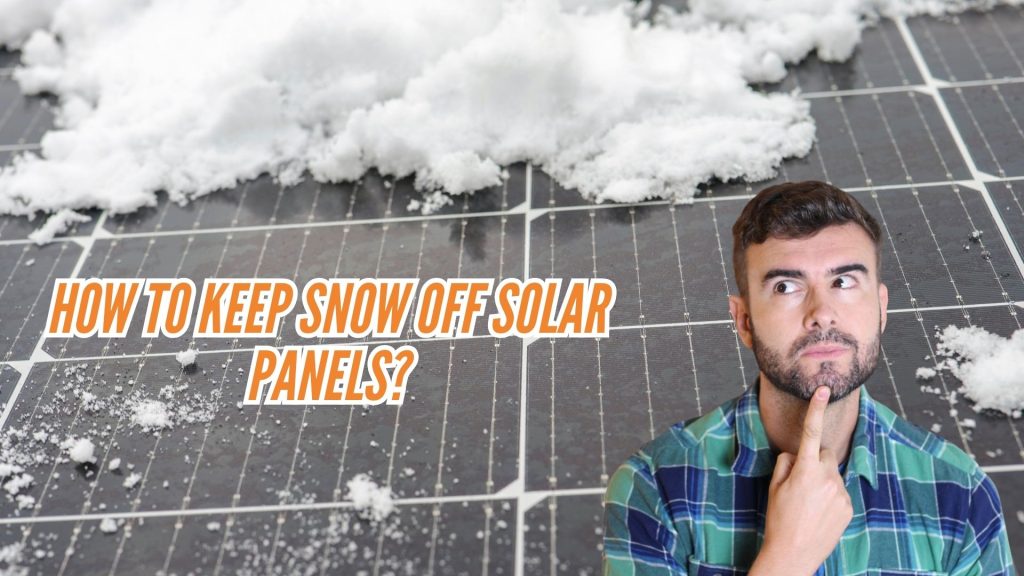
Winter presents unique challenges for solar energy users, particularly in snow-prone areas. When snow accumulates on solar panels, it can obstruct sunlight, significantly impacting energy output. For those in California and regions experiencing occasional snowfall, understanding effective snow removal strategies ensures that your solar system operates efficiently.
This guide explores practical methods to maintain panel performance during winter while safeguarding your investment.
Why Clearing Snow from Solar Panels is Essential for Optimal Performance
Snow-covered panels hinder sunlight absorption, leading to reduced energy production. Even a thin layer of snow can decrease energy generation by up to 30%, with heavier layers potentially cutting it by 70-80% or more.
Prolonged obstruction could result in days or even weeks of inefficiency, increasing reliance on the grid and raising electricity costs. Keeping your panels clear not only preserves their effectiveness but also prevents potential long-term damage caused by ice formation and accumulated weight.
Top Methods for Keeping Snow Off Solar Panels
1. Wait for Natural Melting
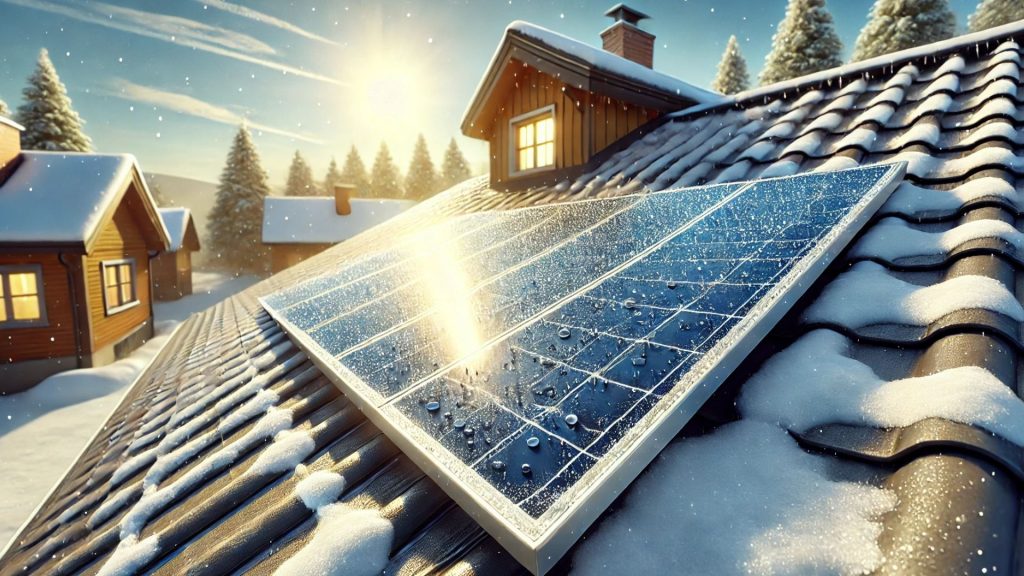
Solar panels are designed to be angled, which helps snow slide off once temperatures rise. Panels facing south receive more direct sunlight, making it easier for accumulated snow to melt naturally. This approach is most effective for light, dry snow that doesn’t compact quickly. It’s an effortless, risk-free method, but not always practical during prolonged cold spells.
2. Use a Roof Rake or Soft-Bristled Broom
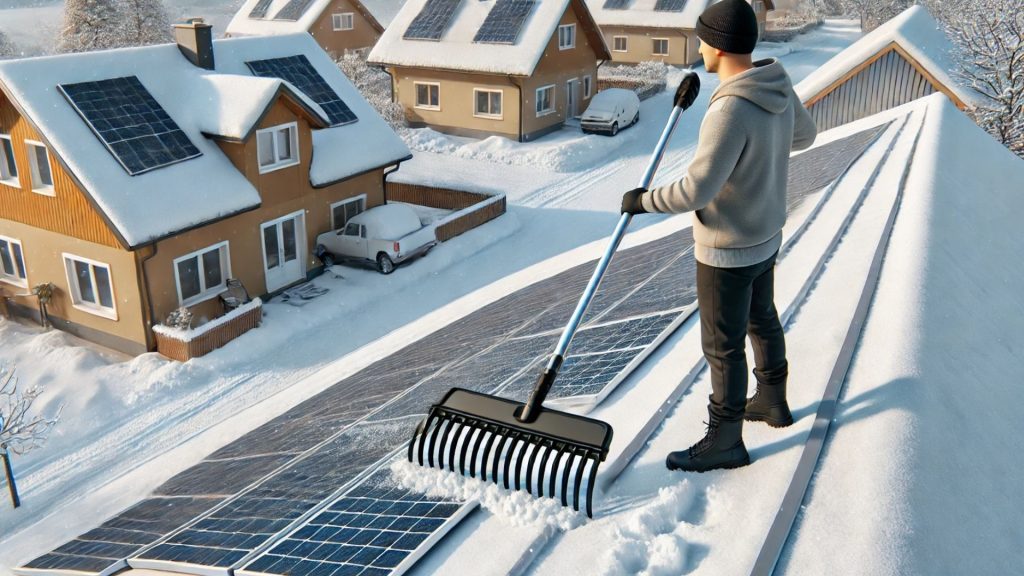
A soft-bristled broom or a roof rake with a rubberized head is an effective way to remove snow without damaging the panels. This tool can safely clear snow from the ground or a ladder without needing to climb onto the roof, minimizing the risk of injury. When using this method, make sure to sweep gently to avoid scratching the panel surface, as any abrasion can impair performance and reduce resale value.
3. Apply Warm Air with a Leaf Blower
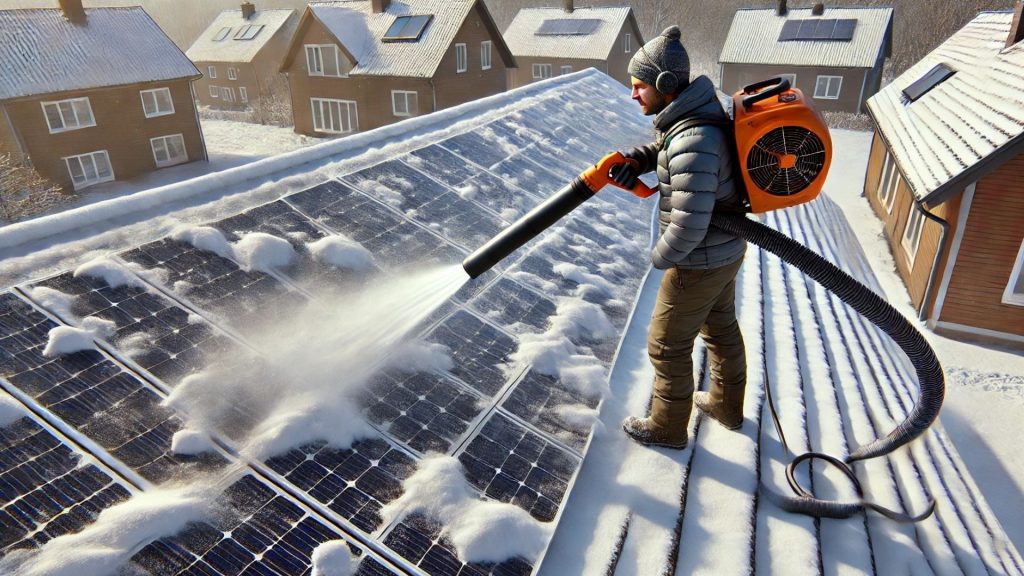
For those dealing with light, fluffy snow, using a leaf blower set to a low power setting can clear panels effectively. The gentle warm air helps dislodge snow without risking damage from direct contact. This method is simple and avoids the hazards associated with manual scraping or climbing.
4. Install Heating Systems
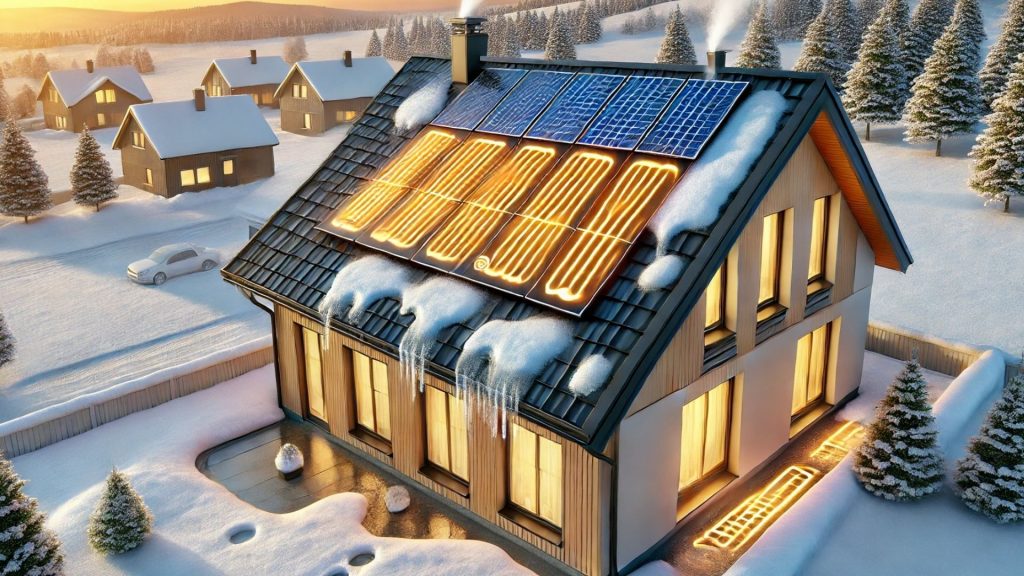
Heating systems, such as electric cables or embedded heaters, can be installed under the panels. These systems activate when snow accumulates, using low-voltage electricity to melt the snow efficiently. While effective, this solution requires a higher initial investment and can use some of the panel’s energy, but it ultimately boosts wintertime energy output and reliability.
5. Spray Panels with Lukewarm Water
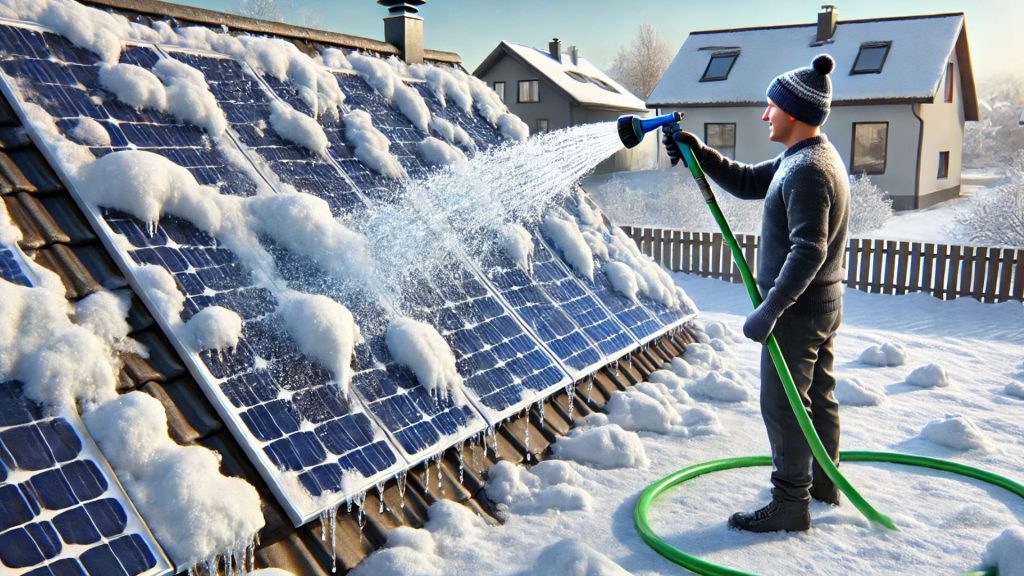
On warmer winter days, spraying panels with lukewarm water from a hose can help clear snow. This method must be approached cautiously to prevent thermal shock—using hot water could damage the glass. Ensure the hose and water are prepared properly so that freezing does not occur after use, which could lead to ice buildup.
6. Utilize Deicing Sprays
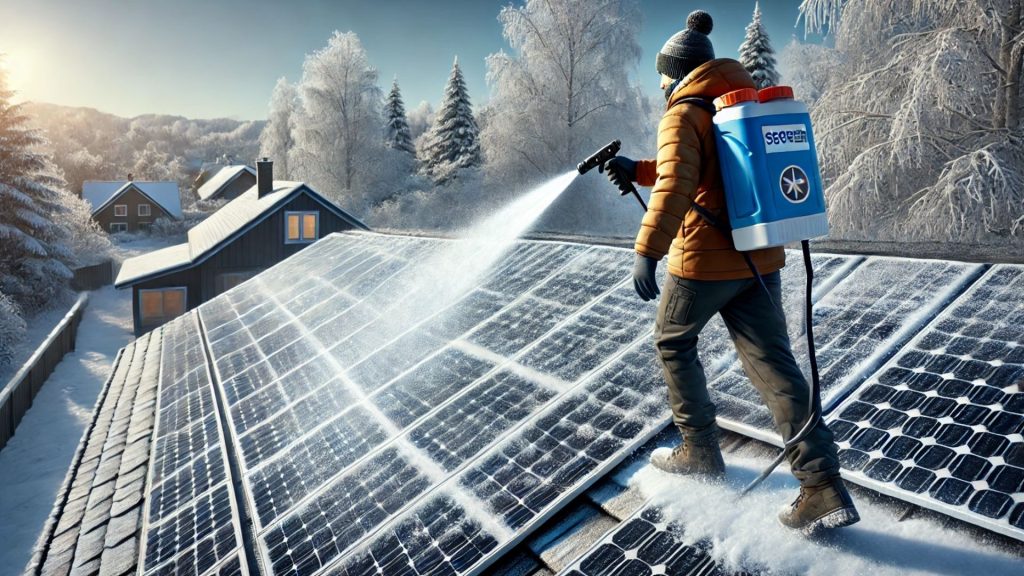
Deicing sprays can be applied to prevent snow and ice from sticking to the panel surface. These sprays create a slick barrier that helps snow slide off easily. It’s important to choose sprays formulated for solar panels to avoid chemical damage and apply them only as directed to maintain their protective effects throughout the season.
7. Throwing a Softball for Gentle Snow Removal
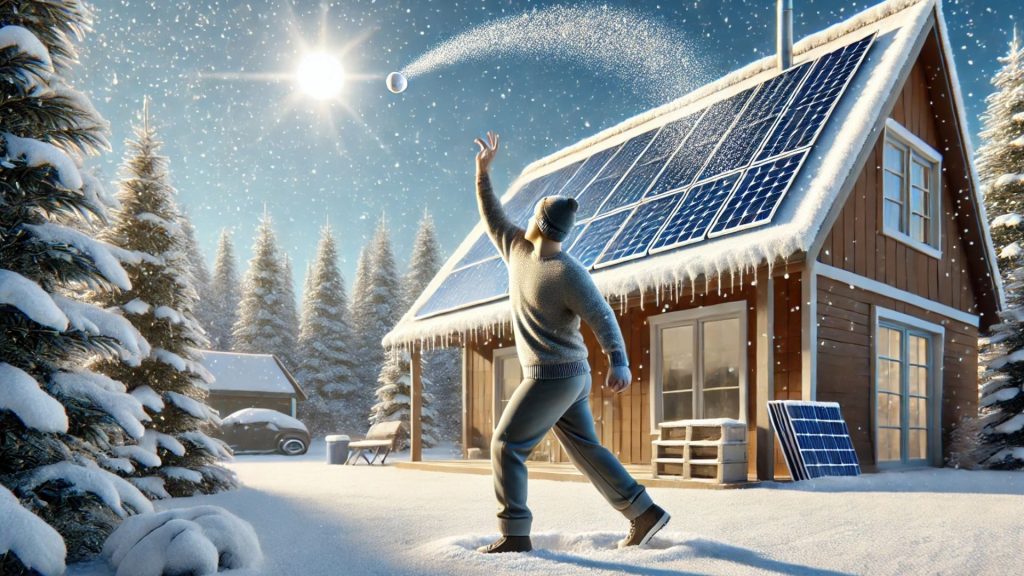
For light snow cover, gently tossing a softball onto panels can create enough vibration to dislodge snow. This low-tech method works best for small accumulations but is not recommended for heavier snow, as the ball might get stuck or cause damage if thrown too hard.
8. Trim Nearby Tree Branches
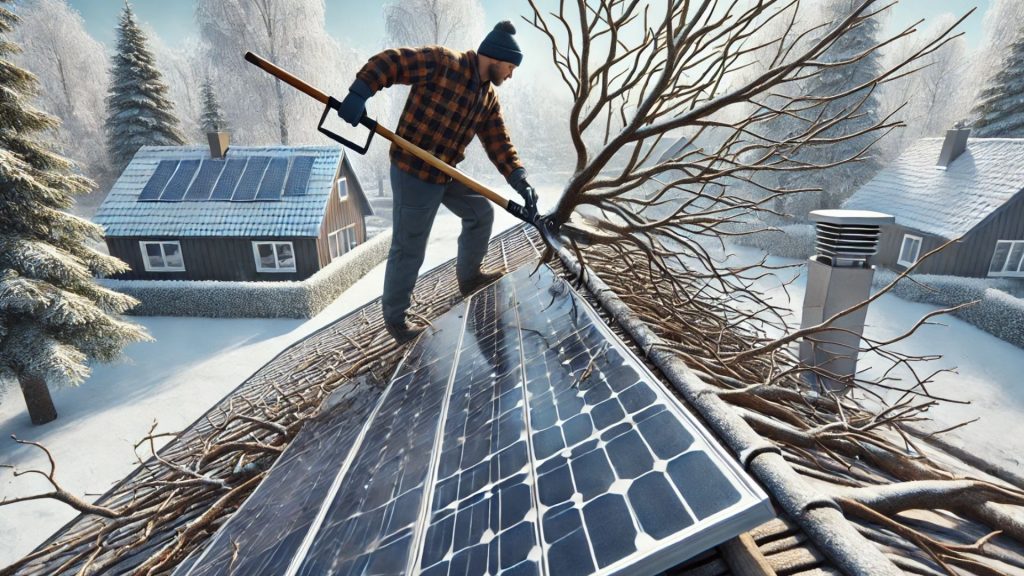
Trimming overhanging branches helps prevent snow-laden debris from falling onto panels, which can add weight and block sunlight. This preventive measure also helps ensure consistent energy capture by keeping the panels free from obstructions year-round.
9. Install Snow Guards
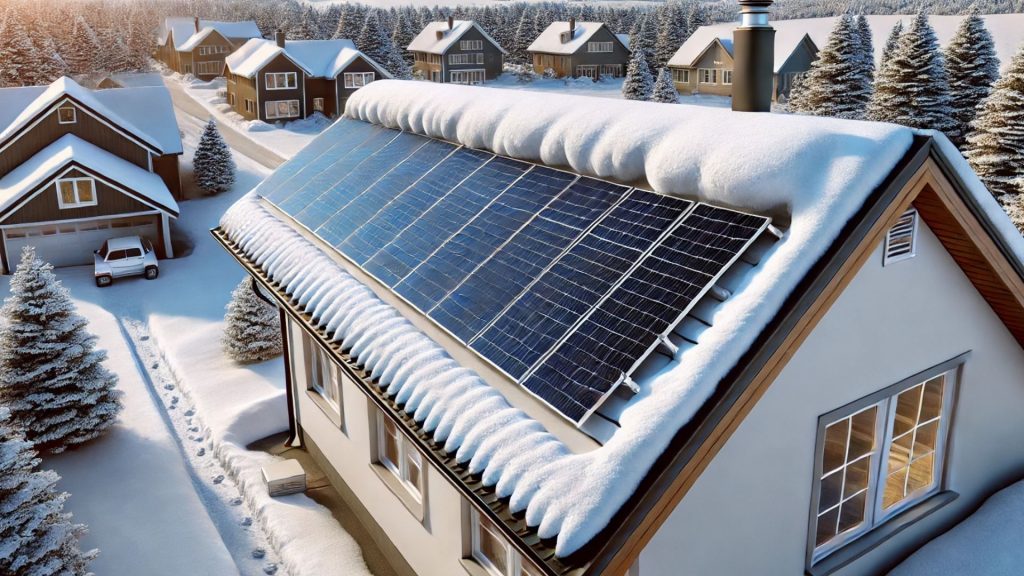
Snow guards are helpful in managing heavy snow loads by preventing sudden slides. These barriers allow snow to melt gradually and safely, protecting the panels and nearby property from potential damage due to sliding snow. Snow guards are ideal for panels on steeply pitched roofs and in regions with frequent snowfall.
10. Use Anti-Stick Coatings
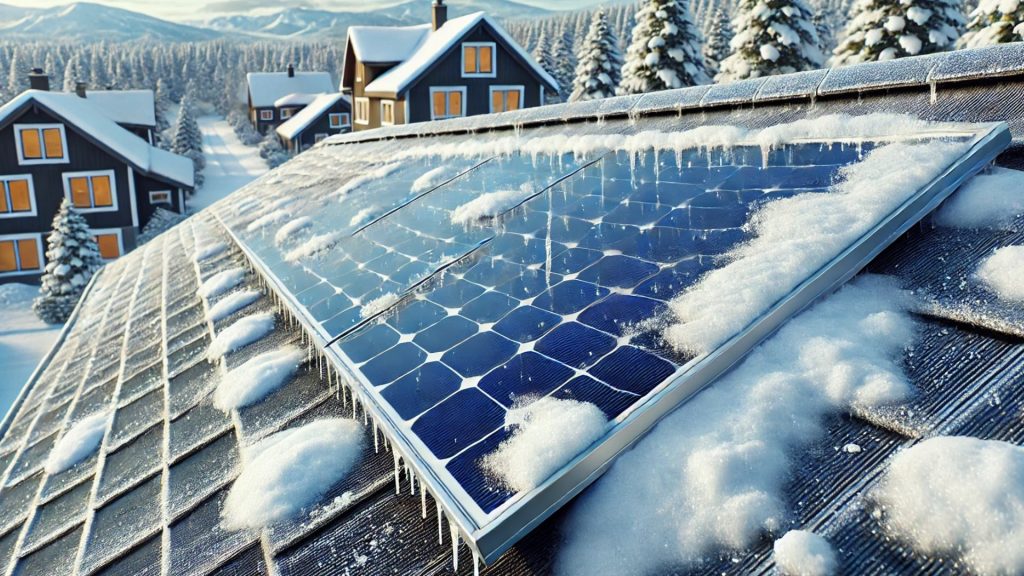
Hydrophobic or anti-stick coatings help keep panels slick and snow-resistant. These coatings should be applied before the snow season and reapplied as needed throughout winter. This preventative step saves time spent on manual clearing and ensures panels stay snow-free longer.
11. Schedule Professional Maintenance
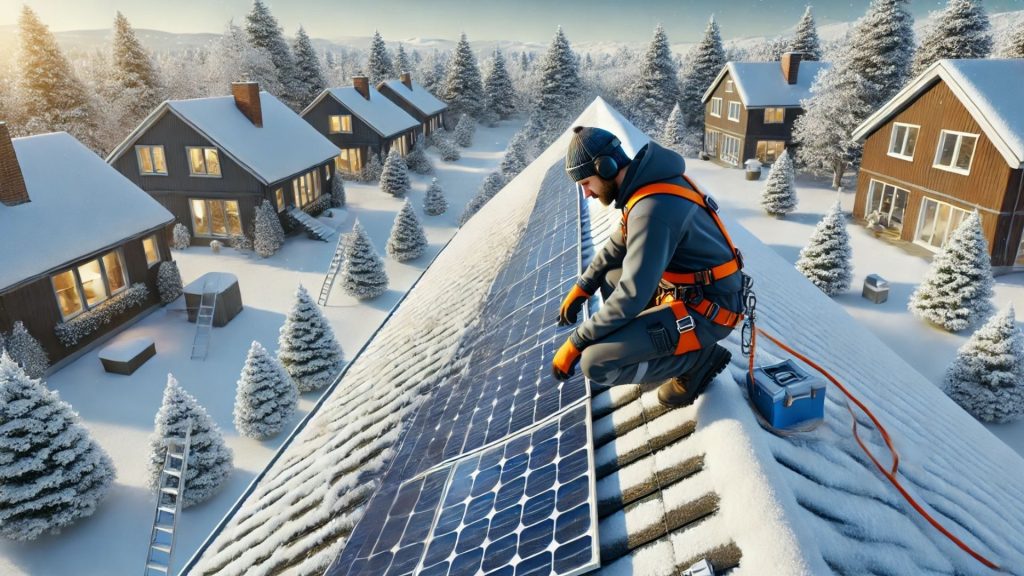
For homeowners who prefer not to handle snow removal themselves, scheduling regular professional maintenance can be a practical option. Professional services ensure panels are cleared safely and checked for any winter damage, offering peace of mind while maintaining panel efficiency.
Each method comes with its advantages and considerations, so it’s essential to choose what suits your property’s needs and climate conditions. Employing a combination of these techniques can provide the most reliable results for maintaining optimal solar energy production during the winter months.
Essential Safety Guidelines for Snow Removal from Solar Panels
1. Check Weather Conditions
Before starting any snow removal, ensure that conditions are safe. Avoid working when it’s icy or during active snowfall to prevent accidents. Slippery surfaces pose a significant risk, so choosing a calm day for snow removal can make a big difference.
2. Inspect Panels and Turn Off the System
Always visually inspect your solar panels for any cracks or damage before beginning. Turning off your system is essential to avoid electric shocks during the cleaning process.
3. Use Appropriate Safety Gear
Equip yourself with non-slip footwear, insulated gloves, and goggles. If you need to climb onto the roof, a safety harness secured to an anchor point should be used. This helps protect against falls when working at heights.
4. Keep a Spotter Nearby
Having someone on standby while you work adds an extra layer of safety, especially if you’re working with tools or on a ladder. They can assist or call for help if needed.
5. Use the Right Tools
Avoid metal shovels or tools that could scratch or damage your panels. Opt for soft-bristled brooms or roof rakes designed for solar panels. These tools are gentle enough to protect the panels’ delicate surface while effectively removing snow.
6. Maintain a Safe Distance
Work from the ground whenever possible. Telescopic poles with soft brush attachments allow you to clean panels without stepping onto potentially slippery roofs.
FAQs
How often should I check my solar panels for snow buildup?
It’s wise to inspect your panels regularly during winter, especially after snowfall. Monitoring ensures that energy production stays optimal and helps catch any issues, such as excessive snow accumulation, that could impede functionality.
Can using the wrong tools void my warranty?
Yes, using inappropriate tools or harsh cleaning methods that cause damage can void your solar panel warranty. Always follow the manufacturer’s guidelines for safe snow removal practices.
Is using salt or chemical deicers safe for snow removal?
No, salt and chemical deicers should not be used on solar panels. These substances can cause corrosion and damage the panel surface and surrounding components.
Are there automated solutions for snow removal?
Yes, there are snow-melting systems and panels with built-in heaters designed to clear snow without manual effort. These automated systems activate when snow is detected, ensuring consistent performance during heavy snowfall. They do require an initial investment and can increase energy usage, so it’s essential to weigh the benefits against the costs.
Does the angle of solar panel installation matter for snow shedding?
Yes, the installation angle significantly affects snow accumulation. Panels installed at a steeper angle encourage snow to slide off more easily, reducing the need for manual clearing.
Should I always remove all the snow from my panels?
While full clearing is ideal, even partial removal can enhance energy capture. Snow melts faster on solar panels than on the ground due to the panels’ slight heat, so removing heavy layers can be enough to restore function.
When should I consider hiring professionals?
If your panels are difficult to access, if there is heavy or compacted snow, or if safety concerns arise, hiring professionals is recommended. They have the right tools and expertise to safely and effectively manage snow removal.
Conclusion
Maintaining your solar panels through winter requires a balance of patience, appropriate tools, and proactive strategies. By following these best practices, you can keep your panels clear of snow, optimize energy output, and extend the life of your solar investment. Stay safe and consider professional help if in doubt to avoid potential damage or personal injury.



